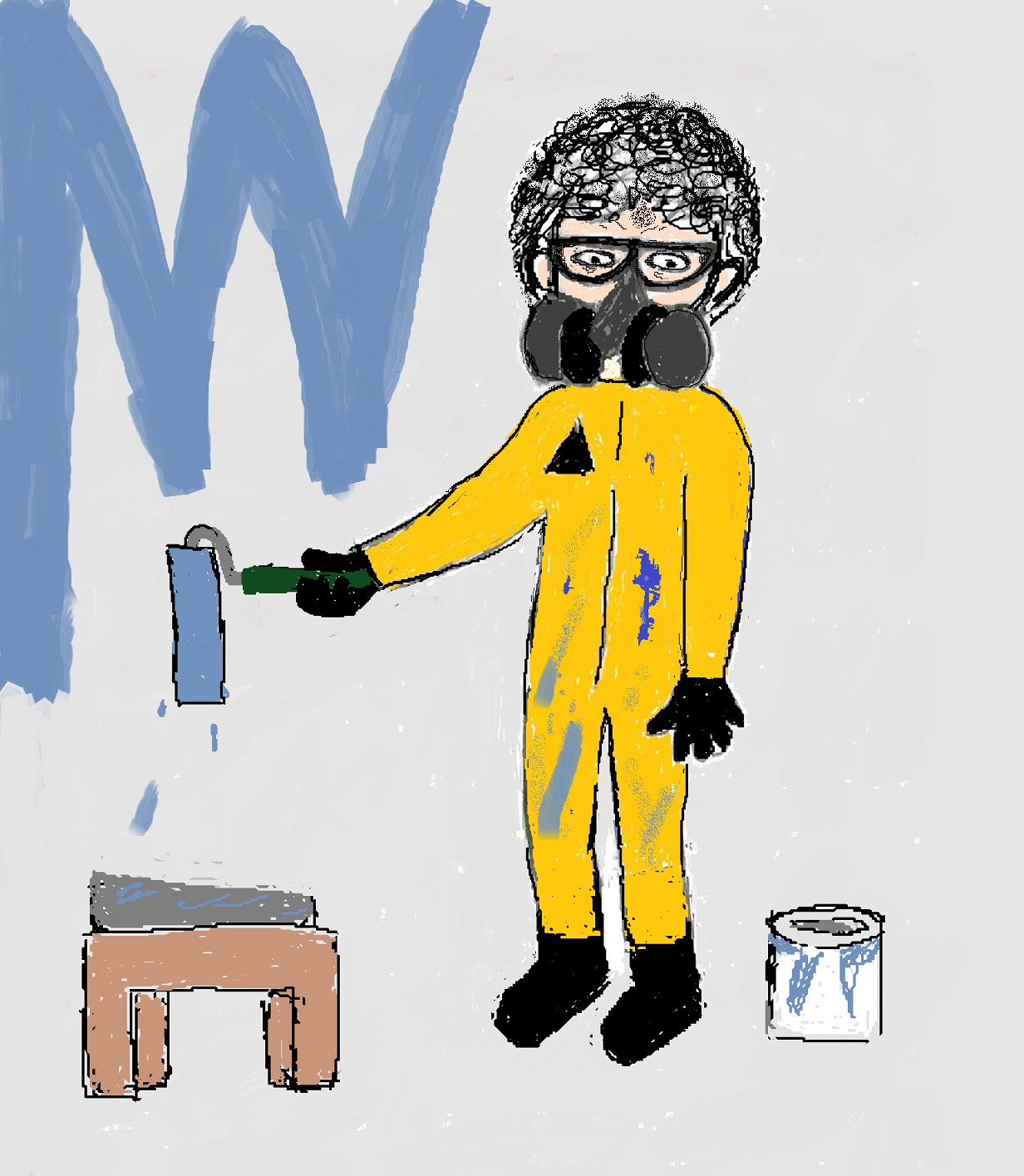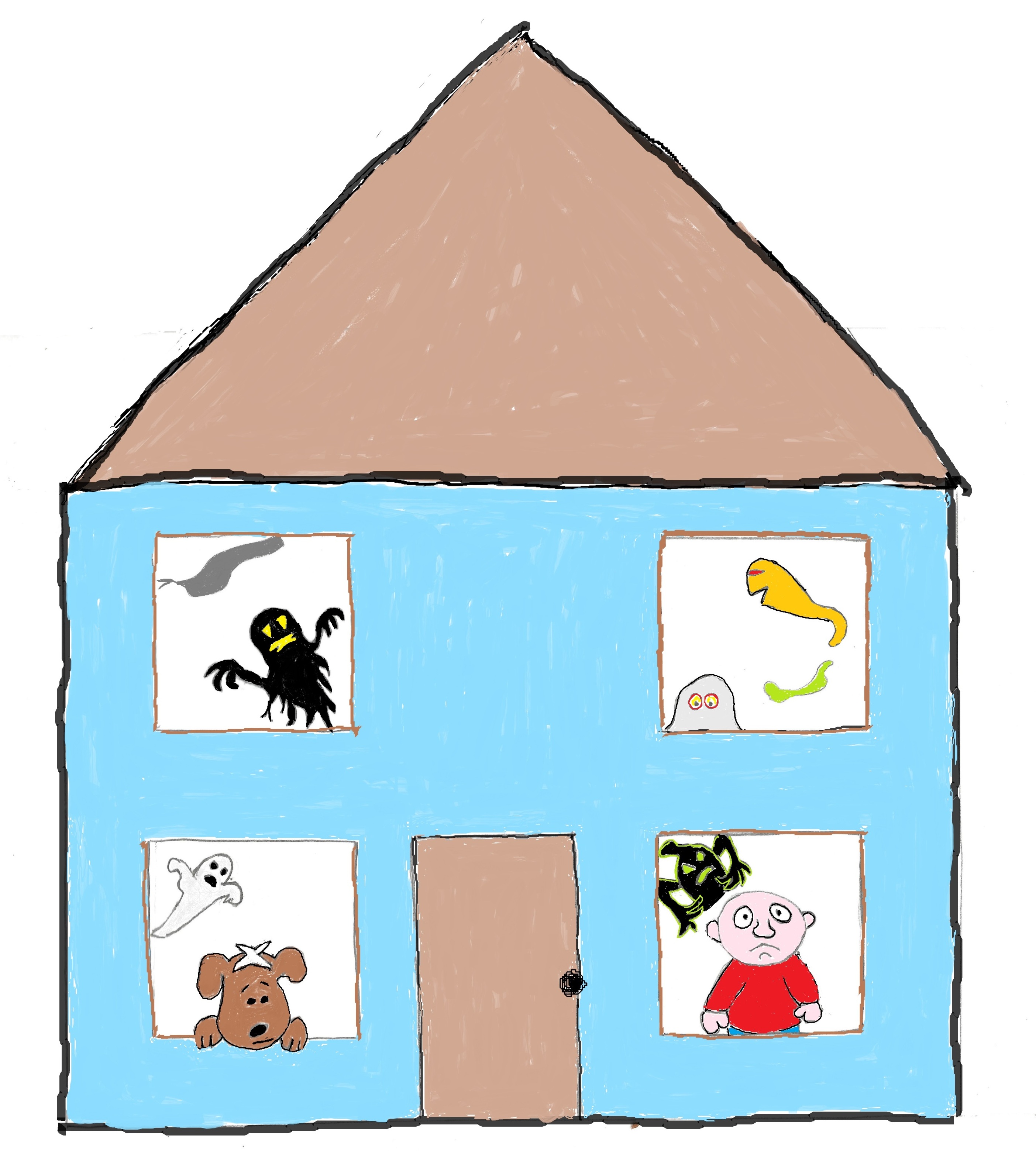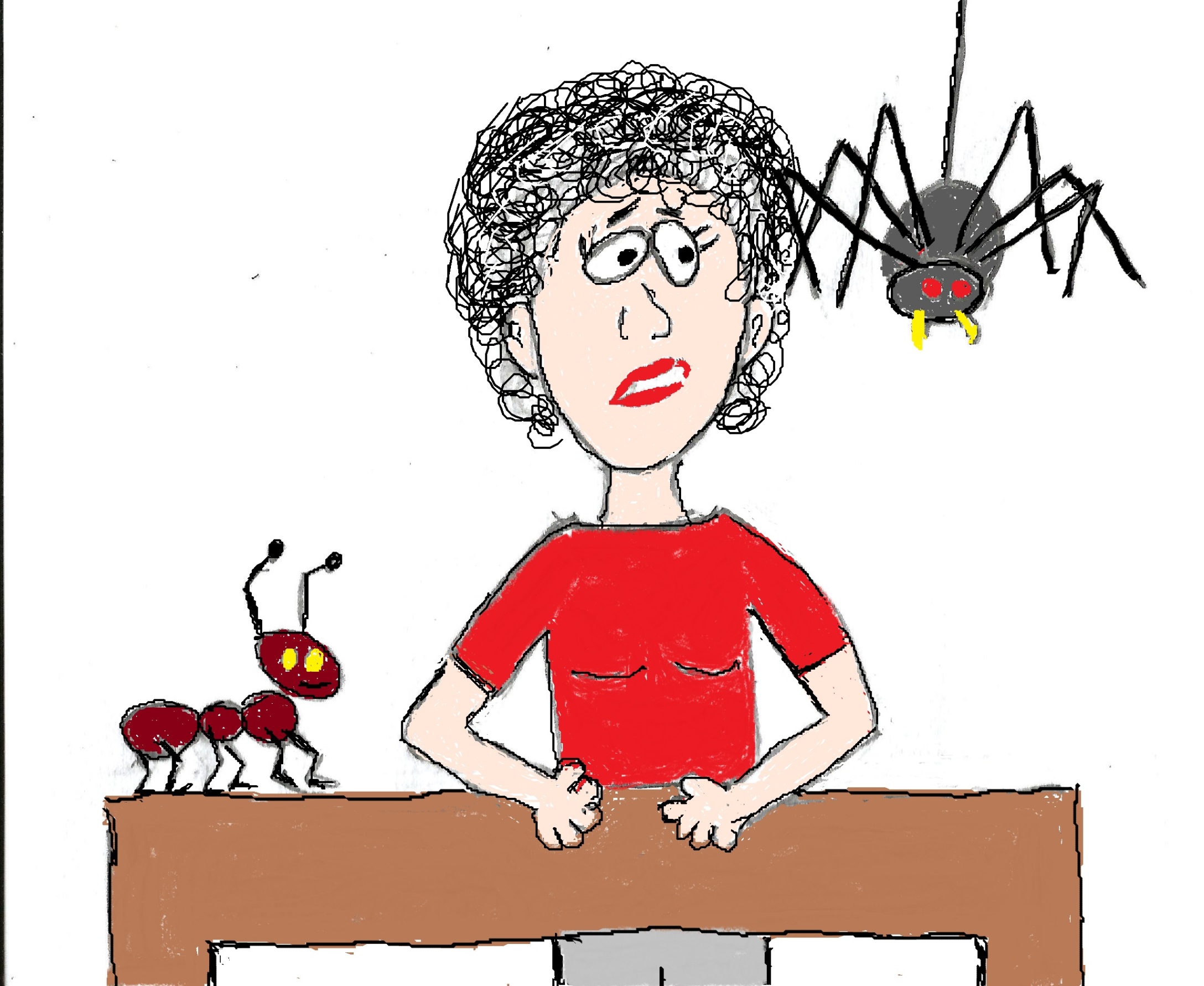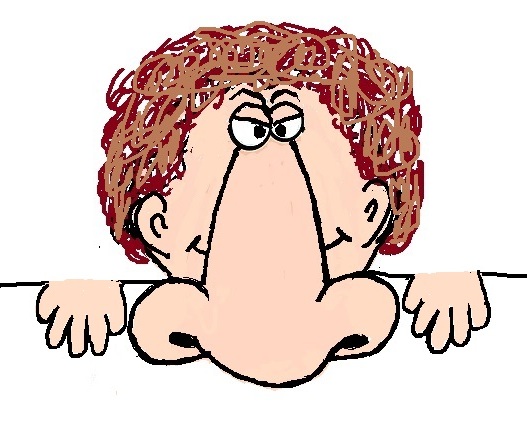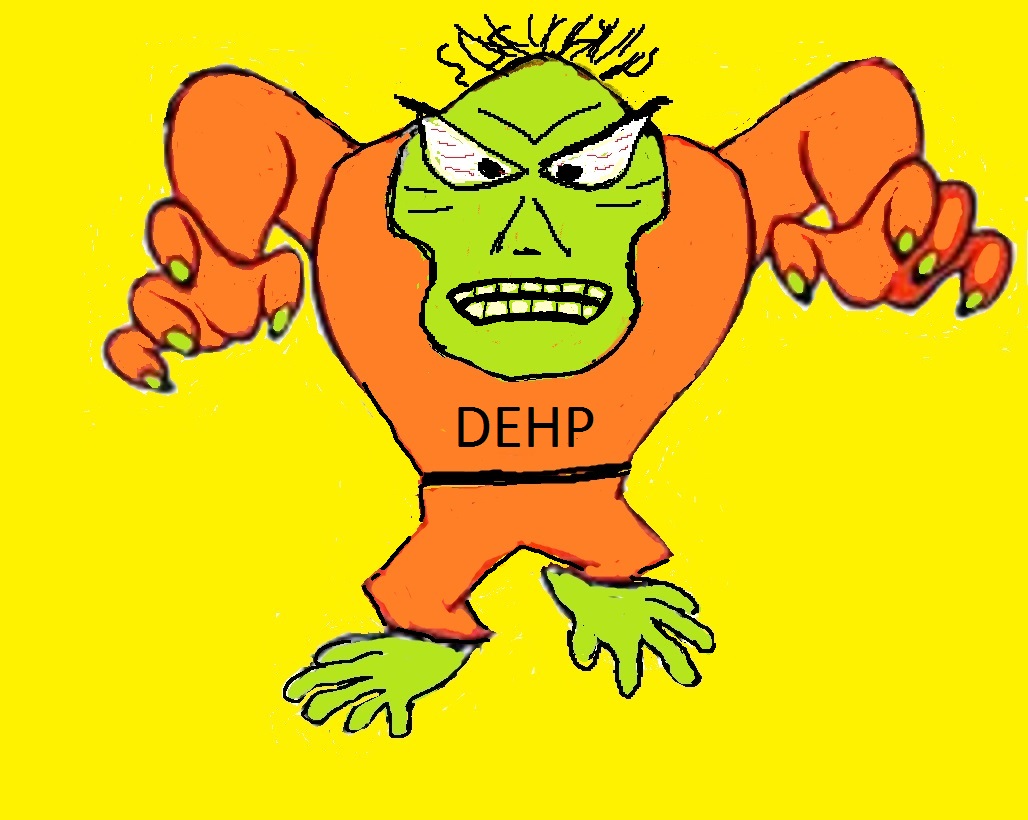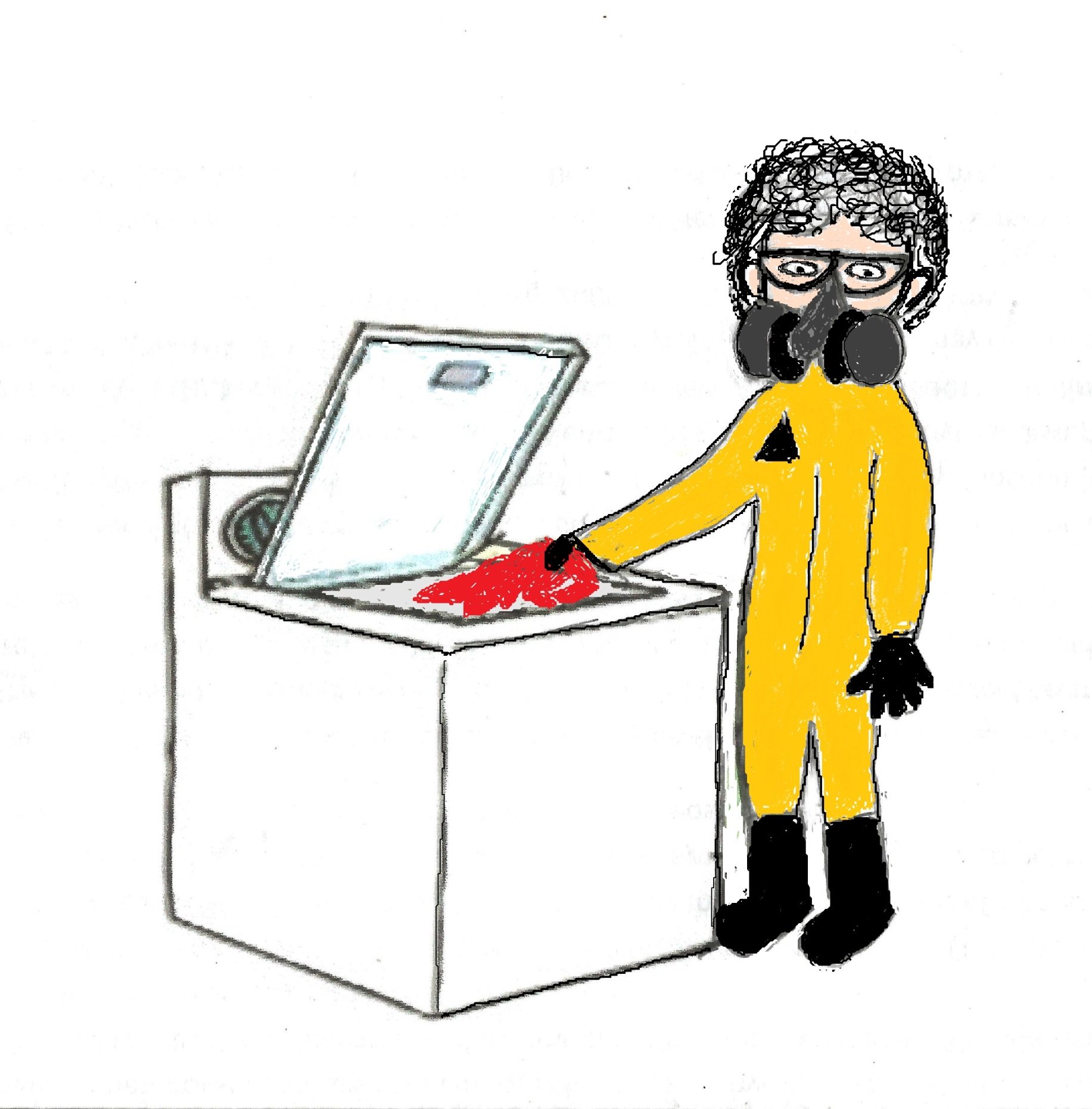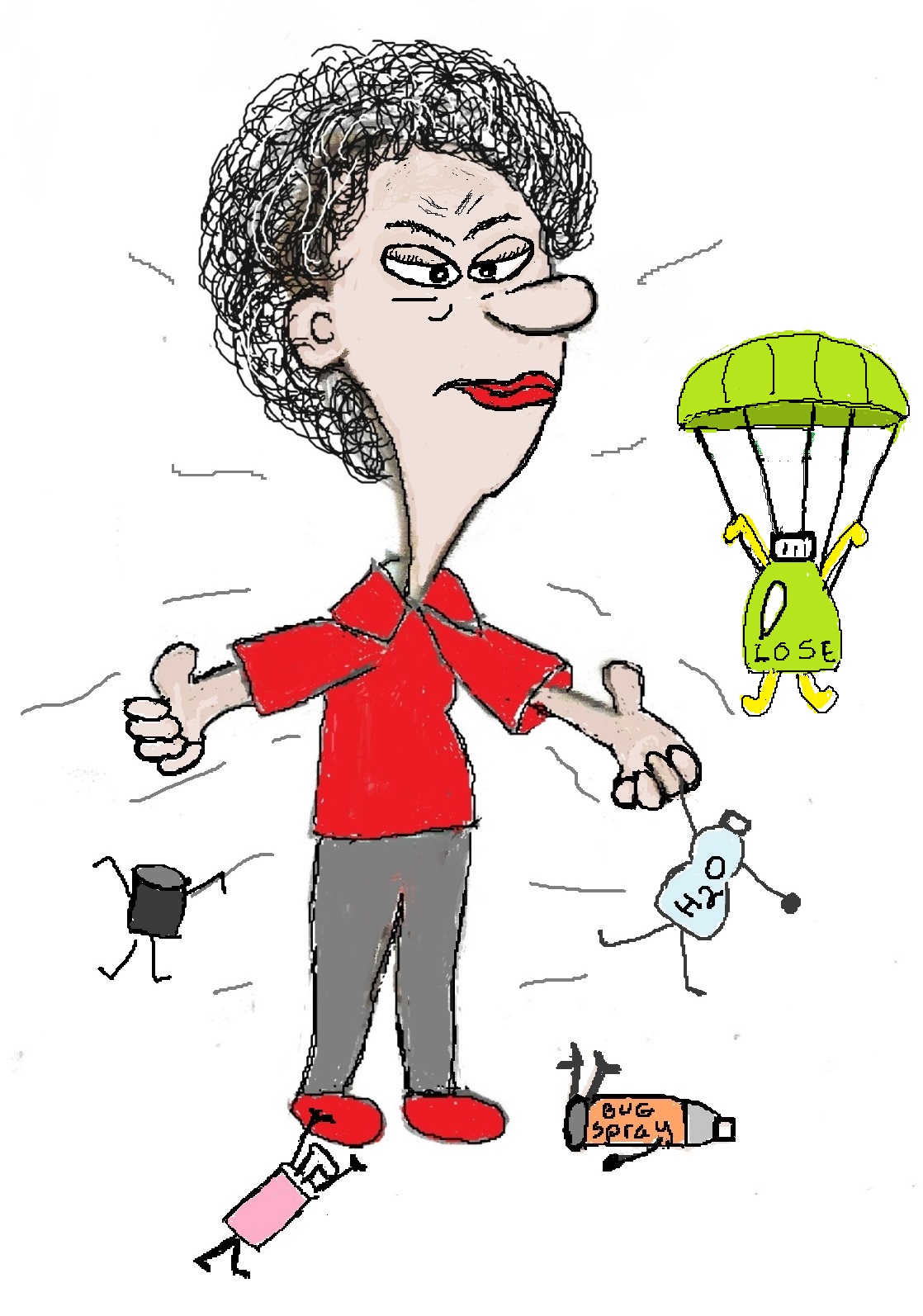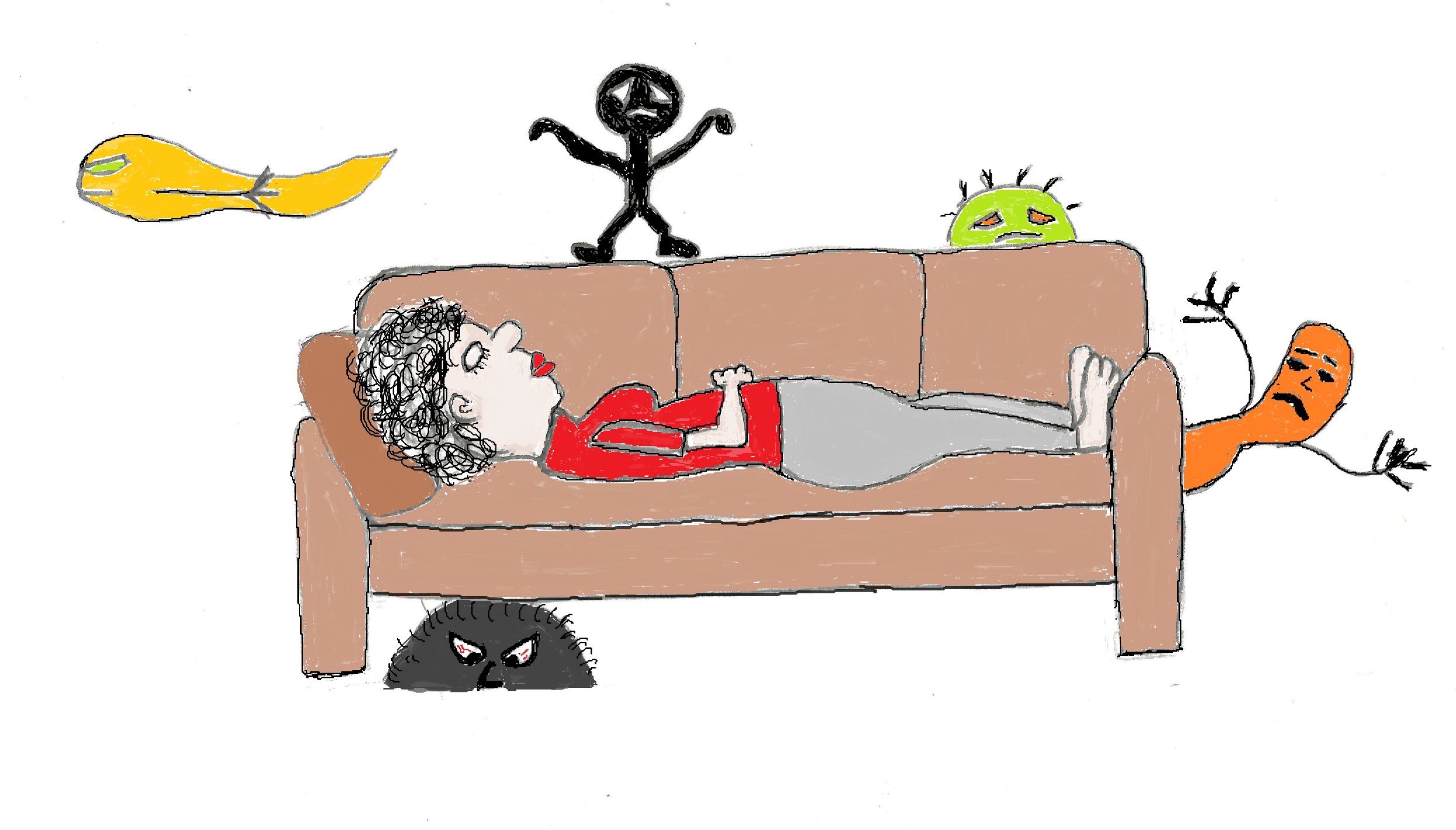- Home
- Toxic Chemicals in Household Products
- Paint Fumes
Paint Fumes Are Toxic
Painting and paint fumes can expose you to many dangerous chemicals. The type and amount you’re exposed to depends on the kind of paint you use and how you apply it.
The Parts Of Paint
Paint's made up of four different types of ingredients,
pigments, binders, additives and solvents.
Pigments are for color and they’re
in the hard coating that remains on your walls after the paint has dried.
Different pigments are used to make different colors of paint. For example, titanium dioxide is the pigment used to make white paint and tintable base paints. Black paint is made from a pigment called carbon black.
Binders hold the paint together so that the pigment forms a film that will stick to your walls. Binders are either synthetic or natural resins, like alkyds, epoxies, oils. Most binders in paint are types of plastic like acrylics, vinyl-acrylics, vinyl acetate/ethylene, polyurethanes, polyesters.
Additives are added to make paints easier to apply, faster-drying, or resistant to mold and mildew. Types of additives include biocides and phthalates.
A solvent is something that dissolves something else. In paint, the solvent's job is to dissolve all the ingredients into a liquid that spreads easily. Once you apply paint to your walls the solvents are supposed to evaporate, so that paint dries.
The types of solvents traditionally used in paint include diethylene glycol monomethyl ether, propylene glycol, ethylene glycol, xylene, toluene, ethyl acetate and acetone.
Solvent-based paints are also called oil-based. Water-based paints (called acrylic or latex) use water as the solvent but small amounts of dangerous solvents can be in the mix.
It is the evaporation of solvents that create paint fumes.
Paint Fumes
So why does paint smell so bad? Well, turning a liquid to a solid requires evaporation. And some chemicals that evaporate from your paint, especially the solvents, smell bad (and are really bad for your health).
Organic (Carbon based) substances that evaporate easily into your air are called Volatile Organic Compounds (VOCs). Paint fumes are made up of the VOCs that are released from the paint you are applying, both as you’re painting and for months afterward.
And your average can of interior latex wall paint contains high levels of VOCs, over 200 grams per litre. Since the solvents in paints are organic they make up a large portion of the VOCs that are released into your air from paint.
1. High VOC Paints
Before low and zero VOC interior paints became available, high VOC paints were the norm. The worst were and are oil-based paints, but water-based latex paints also release high levels of toxic VOCs.
The types of VOCs released from high VOC paint depends on the solvents used in these paints. Generally though, the paint fumes from high VOC paint contain a dangerous combination of carcinogens, lung, liver, neuro and skin toxins and endocrine disruptors.
Oil Based paints are especially scary. They are high VOC paints that create fumes containing neurotoxins like naptha (that can make up a third of the paint) and carcinogens like ethylbenzene.
Some of the specific chemicals that can be found in paint fumes include
- Diethylene glycol
monomethyl ether, a neurotoxin and liver and reproductive toxin. Besides
breathing it in from paint fumes, it Can also be absorbed through your skin.
- Benzene, a solvent ingredient which is
commonly added to paint to help it dry more quickly. It is highly toxic when
inhaled, and is known to cause cancer and leukemia. Benzene can also affect the
central nervous system.
- Xylene, which is toxic to your blood, kidneys, liver,
mucous membranes, bone marrow and your central nervous system (CNS). Repeated or prolonged exposure can damage organs like your liver and lungs.
- Vinyl acetate, which severely
irritates your eyes, skin, and respiratory tract. Inhalation can cause excess fluid to collect in your lungs, making it difficult to breath. Long term exposure may cause liver and lung damage.
This chemical can also
pass through your skin. Similar solvents and petroleum-based chemicals have been
shown to cause brain and nerve damage.
- Polypropylene glycol, a type of glycol ether. Exposure to glycol ethers may cause developmental and reproductive effects.
2. There Are Toxic Chemicals In Paint That Aren’t VOCs
Just because a chemical in paint doesn’t create toxic paint
fumes, doesn’t make it safe. Some paints, for example, contain ammonia and
acetone which are dangerous to your health, yet they're not classified as VOCs.
Fungicides and biocides are toxic chemicals added to paint to extend its shelf
life and for paint used in made for high-moisture places like bathrooms.
For example, Mold & Mildew-Proof Interior Paint often contains the biocide mixture Methylisothiazolinone and Methylchloroisothiazolinone (biocide preservative). The EPA's Office of Pesticide Program considers this mixture as highly toxic.
3. Paint Often Contains Ingredients Of Unknown Toxicity
Material Data Safety Sheets (MDSS) are required for products that contain ingredients that are proven to be toxic. But you'll often find the statement “Contains Ingredients of Unknow Toxicity” on the MDSS followed by a percentage of the total ingredients.
This means that many of the chemicals in paint have not been tested for their safety. There's no evidence that they're toxic (and no evidence that they're safe).
Since they are not yet labeled as toxic they don't have to be listed as ingredients on the MDSS. What you will see is the percentage of the paint chemicals that fall under this category. Sometimes this can be a third of the ingredients in paint.
4. Paint Manufacturers Hide Secret Ingredients in Your Paint
Some of the ingredients in paint may fall under the label proprietary or trade secrets. That means they don’t have to be identified, even if they are toxic.
In my research, I’ve seen anywhere from 30% - 60% of the ingredients in some paints listed as proprietary.
5. Pretty Colors Increase VOCs
Since many of the MDSS sheets are for white or untinted paint, the pigments used to color paint the way you want are unknown. Some of them may be toxic. An example is Carbon Black, suspected of causing cancer, that is found in dark tinted paint.
Tinting your paint with pigments can also increase the VOCs released. Standard tints contain the solvent ethylene glycol.
The lowest VOCs are in the white base paint. Tinting your paint a light color won’t significantly raise the paint's overall VOC level. However, the darker the shade you pick, the higher the level of solvents.
Specialty Paints
Specialty paints are used to keep metal from rusting, to protect wood stoves and outdoor grills, to create a chalkboard surface anywhere, cover concrete and refresh outdoor furniture. You can even spruce up old flower pots.
There are a lot of cool things you can do with specialty paint. Unfortunately, the paint fumes from these paints, because they are solvent based, are a toxic cocktail of carcinogens and endocrine disrupting chemicals.
In fact, many specialty paints are labeled as posing both "an Acute and Chronic Health Hazard".
The
Chemicals In Specialty Paint Fumes
As you look over the list below of the toxic chemicals in specialty paints, keep in mind that most of them are released into the air as paint fumes. In other words, these chemicals are released as VOCs.
In fact, the VOC levels in specialty paint are anywhere from over 200 grams / liter to a whopping 600+ gms/L.
Plus, just like interior latex paint, a can of specialty paint may contain a large percentage (can be as high as 69%) of ingredient(s) of unknown acute toxicity. This means they have not been tested to determine whether they can make you sick.
So, you can assume that using specialty paints exposes you to paint fumes containing some of the following toxic chemicals, plus numerous chemicals that may be toxic but haven’t been tested.
|
Carcinogens Ethanol |
Reproductive Toxins
Ethanol |
Why My
Cartoon Is No Joke
You might be thinking that my cartoon at the beginning of this post is a bit over the top. But if you read the Material Data Safety Sheet (MDSS) that's available with every kind of paint, you'll find that my drawing is no exaggeration.
- The health warning on specialty paints states:
"Do not breathe dust/fume/gas/mist/vapors/spray / Wear protective gloves/protective clothing/eye protection/face protection."
- To safely use these paints you’re supposed to:
"Use impervious gloves to prevent skin contact and absorption of this material through the skin. Nitrile or Neoprene gloves may afford adequate skin protection. Wear safety eyewear designed to protect against splash of liquids. Protection provided by air purifying respirators is limited. Use a positive pressure air supplied respirator."
Show of hands. How many of you follow these safety guidelines when you use specialty paints?
Spray
Paints Are The Most Toxic Specialty Paints
The absolute worst type of specialty paint, including those used on metal and vinyl, for high heat applications and chalkboard paint, are found in a spray can.
The Health Hazard Warnings listed in the MDSS for spray paint usually says this:
"Suspected of causing cancer, Causes serious eye and skin irritation, Suspected of damaging fertility or the unborn child and May cause damage to organs through prolonged or repeated exposure." Plus, it is an extremely flammable aerosol.
And because you spray them into the air as a mist, you increase your exposure to the dangerous chemicals in these paints.
Four Reasons Why Spray Paints Are So
Toxic
1. The average VOC level in spray paint is over 500 gms/liter. I think it's because the paint is thinner, which means more solvents are used.
2. They have the most toxic paint fumes because of the amount and kind of chemicals used. Besides the extra solvents, a liquefied petroleum gas (LPG), like butane, is needed to get the paint out of the can.
3. Spraying paint increases your exposure to toxins. You’re basically spraying finely atomized paint, binder, pigment, and solvents into your air.
- Sprayed chemicals linger in your home's air the longest.
- It's easier to inhale the toxins into your airways because of the turbulent air flow created by sprayers.
- The sprayed paint chemicals can attach to surfaces in your home. Things like carpet, wallpaper, drywall and curtains can absorb and release these chemicals long after you're done cleaning.
- Paints contain minerals like crystalline silica, titanium dioxide, and talc, which are dangerous when inhaled, but considered safe in liquid form. However, in spray paint, the mist from the nozzle exposes you to these carcinogens
Fortunately, there’s really no good reason to expose yourself to high levels of dangerous paint fumes. There are lots of great non toxic and less toxic paint options easily available.
Click on this link for non toxic wall and wood paint options and some less toxic specialty paint options.
